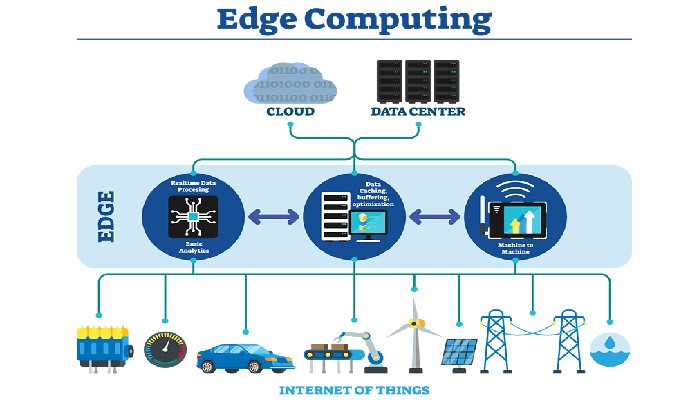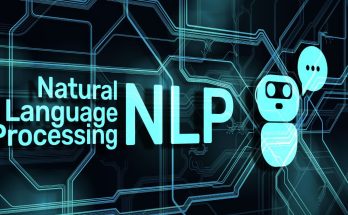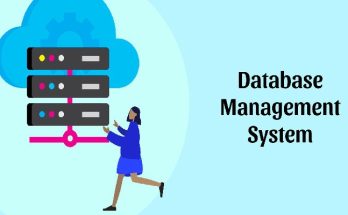Exploring the Benefits of Edge Computing Solutions
Welcome to the cutting-edge world of Edge Computing Solutions! In today’s digital age, where speed and efficiency reign supreme, traditional cloud computing is making way for a more agile and dynamic approach – edge computing. Get ready to delve into the realm of faster processing, reduced latency, and enhanced user experiences as we explore the myriad benefits that edge computing has to offer. Let’s embark on this journey together and uncover how edge computing solutions are revolutionizing the way data is managed and processed in our interconnected world.

What is Edge Computing?
In simple terms, edge computing brings the power of data processing closer to where it’s generated – at the “edge” of the network. Unlike traditional cloud computing, which centralizes data processing in remote servers, edge computing distributes this workload to devices or local servers near the data source.
By moving computation closer to where data is created, edge computing reduces latency and bandwidth usage. This means faster response times and more efficient use of network resources. Devices equipped with edge computing capabilities can analyze and act on data in real-time without constantly relying on a distant server for instructions.
From smart homes and autonomous vehicles to industrial IoT applications, edge computing plays a vital role in enabling seamless connectivity and rapid decision-making at the device level. By leveraging edge computing solutions, organizations can unlock new possibilities for innovation across various industries.
The Evolution of Edge Computing
Edge computing has come a long way since its inception, evolving rapidly to meet the increasing demands of modern digital environments. Initially conceived as a solution to reduce latency and bandwidth usage by processing data closer to the source, edge computing has now expanded its capabilities beyond just improving speed and efficiency.
With advancements in technologies like IoT devices, 5G networks, and AI algorithms, edge computing has transformed into a versatile platform that enables real-time data processing and analysis at the network’s edge. This evolution has empowered businesses across various industries to leverage data-driven insights for enhancing operational efficiencies and delivering superior customer experiences.
Moreover, the evolution of edge computing has paved the way for innovative applications such as autonomous vehicles, smart cities, remote healthcare monitoring, and predictive maintenance systems. These use cases demonstrate how edge computing is revolutionizing traditional business models by enabling organizations to harness the power of decentralized data processing.
As technology continues to advance at a rapid pace, we can expect further evolution in edge computing solutions with enhanced capabilities for processing massive amounts of data efficiently while maintaining low latency requirements. The journey of edge computing is far from over – it is continually adapting and expanding to cater to the dynamic needs of our increasingly connected world.
Advantages of Edge Computing over Traditional Cloud Computing
Edge computing offers several key advantages over traditional cloud computing. One major benefit is reduced latency, as data processing occurs closer to the source at the edge of the network. This leads to faster response times and improved overall performance in real-time applications.
Another advantage is enhanced security and privacy. Edge computing enables sensitive data to be processed locally, reducing the risk of potential breaches during transmission to centralized servers. This decentralized approach also minimizes exposure to cyber threats by limiting the attack surface.
Furthermore, edge computing reduces bandwidth usage by processing and storing data locally before transmitting it to the cloud. This can result in cost savings for organizations that rely on large amounts of data transfer.
These advantages position edge computing as a powerful solution for businesses seeking efficient, secure, and high-performing technology infrastructure.
Use Cases for Edge Computing
Edge computing solutions have a wide range of use cases across various industries. In the healthcare sector, edge computing can enable real-time monitoring and analysis of patient data, improving decision-making for medical professionals. Retailers can utilize edge computing to enhance customer experiences by personalizing recommendations based on in-store behavior.
Manufacturing companies benefit from edge computing by enabling predictive maintenance on machinery, reducing downtime and increasing operational efficiency. In smart cities, edge computing plays a crucial role in managing traffic flow, optimizing energy consumption, and enhancing public safety through real-time data processing.
The entertainment industry leverages edge computing for low-latency content delivery, ensuring seamless streaming experiences for users. Edge computing also supports autonomous vehicles by enabling quick decision-making processes based on real-time sensor data analysis.
The versatility of edge computing applications demonstrates its potential to revolutionize diverse sectors with efficient and timely data processing capabilities.
Challenges and Solutions in Implementing Edge Computing
As businesses embrace edge computing solutions, they encounter challenges in implementation. One common obstacle is the need for a robust infrastructure at distributed locations to support edge devices effectively. Managing data security and privacy concerns at the edge can also be a complex task, especially with sensitive information being processed closer to endpoints.
Furthermore, ensuring seamless connectivity between edge devices and centralized systems without compromising speed or reliability presents another challenge. The dynamic nature of edge environments requires efficient monitoring and management tools to optimize performance continuously.
To address these challenges, organizations are leveraging advancements in technology such as AI-driven analytics for proactive maintenance and real-time threat detection. Implementing edge computing gateways that provide secure communication channels and reliable data processing capabilities help streamline operations at the network’s edge.
Collaboration with experienced service providers specializing in edge solutions can offer valuable insights and expertise throughout the deployment process. By overcoming these obstacles strategically, businesses can unlock the full potential of edge computing for enhanced performance and efficiency across diverse industries.
Future of Edge Computing
As technology continues to advance at a rapid pace, the future of edge computing looks promising. With the rise of IoT devices and the increasing need for real-time data processing, edge computing is set to play a crucial role in shaping the digital landscape.
In the coming years, we can expect to see even greater integration of edge computing solutions across various industries. From autonomous vehicles leveraging edge computing for split-second decision-making to smart cities optimizing resource management through decentralized data processing, the possibilities are endless.
Moreover, advancements in hardware capabilities and networking technologies will further enhance the performance and scalability of edge computing systems. This will enable organizations to harness the power of edge computing for more complex applications and use cases, driving innovation and efficiency across sectors.
As we look ahead, it’s clear that edge computing will continue to evolve and revolutionize how data is processed, stored, and utilized. Stay tuned for exciting developments on this front!
Conclusion
Edge computing solutions are revolutionizing the way data is processed and analyzed, bringing efficiency and speed to various industries. With its ability to handle vast amounts of data closer to where it’s generated, edge computing offers a myriad of benefits over traditional cloud computing. From reduced latency and bandwidth usage to enhanced security and reliability, the advantages are evident.
As technology continues to advance, we can expect edge computing to play an increasingly vital role in optimizing processes and improving overall performance. By addressing challenges such as security concerns and integration complexities, organizations can fully harness the potential of edge computing solutions.
Embracing edge computing is not just a trend but a strategic move towards enhancing operational efficiencies and unlocking new possibilities for innovation. Stay ahead of the curve by exploring how edge computing solutions can transform your business operations today.



